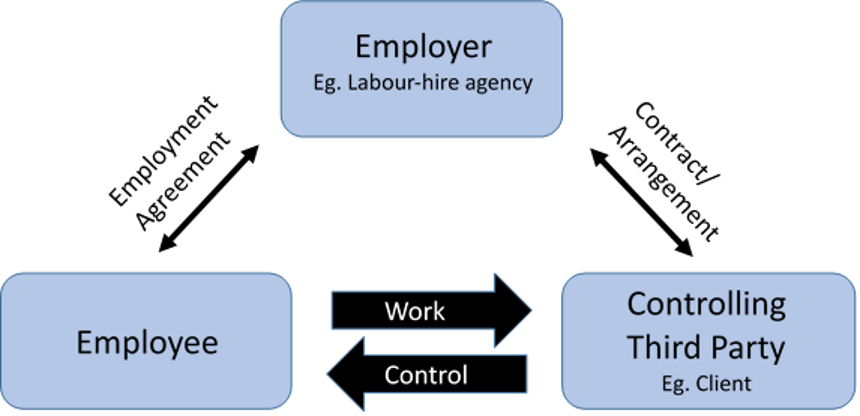
All businesses should be aware of an employment law change which came into effect on 27 June 2020, particularly businesses that use labour-hire companies, temping agencies, or regular contractors.
The new change, authorised by the Employment Relations (Triangular Employment) Amendment Act 2019, allows a third party organisation to be joined to an employee’s personal grievance against their employer
What is a Triangular Employment Relationship?
A triangular employment relationship is where an employee is employed by one party, such as a labour-hire or temping agency, but the employee works under the control or direction of a “controlling third party”. For example, Homer is employed by Mr Burns at the nuclear power plant, but is then seconded to work for Apu at the Kwik-E-Mart.
The employee carries out work for the controlling third party as a result of a contract or other arrangement (either short or long term) between them. The controlling third party exercises control or direction over the employee in a manner similar to that of a traditional employer.
Triangular employment relationships are not restricted to the labour-hire example, but may also apply in other arrangements, such as:
- Sharing of labour between parent and subsidiary companies, or between different subsidiaries under the same umbrella;
- Employees seconded to different organisations; or
- Long-term or regular engagements of contractors.
The Effects of This Law Change
The new changes allow controlling third parties to be joined to personal grievance claims brought by employees against their employer, if the personal grievance relates to an action alleged to have happened while the employee was working for the controlling third party.
If joined, the controlling third party would need to participate in any legal proceedings arising from the personal grievance, including attending mediation. They may also be liable to pay some or all of any remedies which are awarded.
For example, if a construction company who regularly uses labour-hire workers decides they no longer wish to employ a particular worker, and that worker is then dismissed as a result by the labour-hire agency, then potentially the dismissed worker may bring their personal grievance against both the construction company and the labour-hire agency.
Other possible consequences of this change could be seen in restructuring/redundancy situations, with dismissed contractors theoretically being able to bring personal grievances against a controlling third party client company
What Does This Mean
The impact of this law change raises important questions regarding the viability and risks for businesses with secondments or those engaging contractors and labour-hire workers, and in particular how the conduct of a controlling third party will be assessed in personal grievances involving triangular employment. It is unlikely these will be answered until these new changes are considered by the Employment Relations Authority or Court.
We recommend not acting hastily when dealing with issues arising with these employees. Instead, act fairly and reasonably with all individuals working for your business. Don’t cut corners in investigating or documenting incidents or complaints involving contractors or labour-hire employees. Businesses should not assume that simply because someone is not an employee they are protected from potential claims. In order to manage the risk of potential personal grievances, we recommend seeking specialist legal advice before making any decisions which may affect a contractor, labour-hire worker or person on secondment.
Sam Hood is part of our Commercial Disputes & Employment team at Norris Ward McKinnon.
